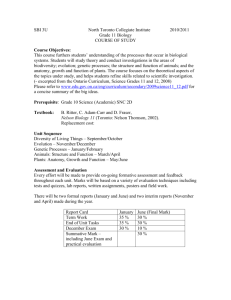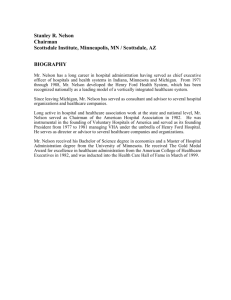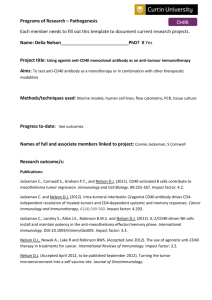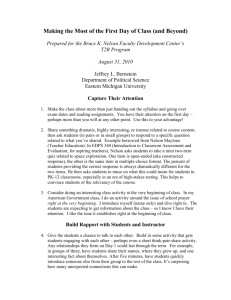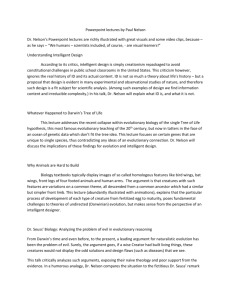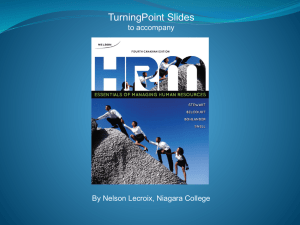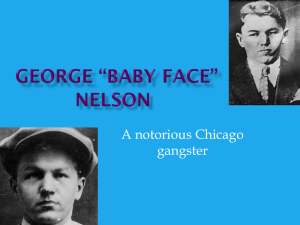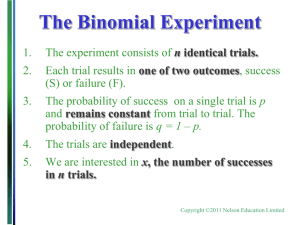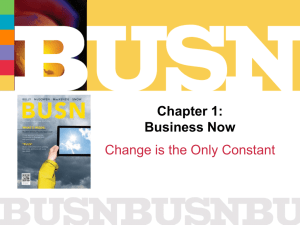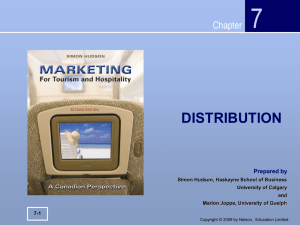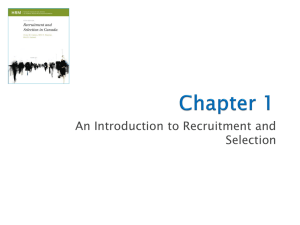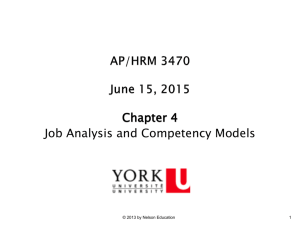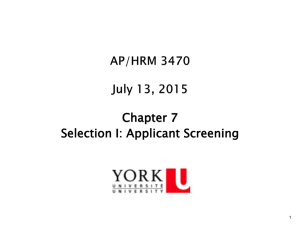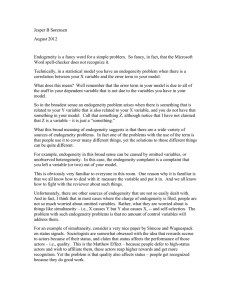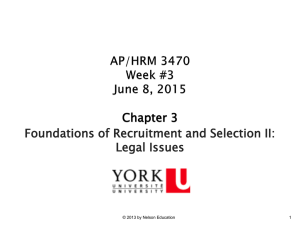Political Methodology Comprehensive Examination January 2012
advertisement
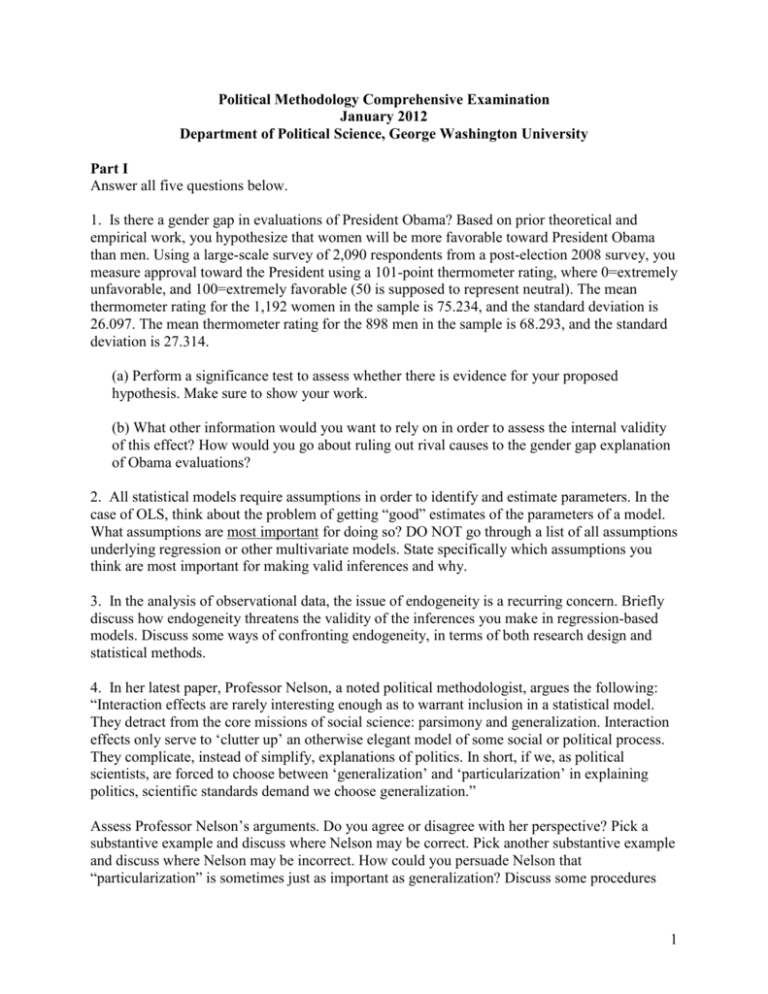
Political Methodology Comprehensive Examination January 2012 Department of Political Science, George Washington University Part I Answer all five questions below. 1. Is there a gender gap in evaluations of President Obama? Based on prior theoretical and empirical work, you hypothesize that women will be more favorable toward President Obama than men. Using a large-scale survey of 2,090 respondents from a post-election 2008 survey, you measure approval toward the President using a 101-point thermometer rating, where 0=extremely unfavorable, and 100=extremely favorable (50 is supposed to represent neutral). The mean thermometer rating for the 1,192 women in the sample is 75.234, and the standard deviation is 26.097. The mean thermometer rating for the 898 men in the sample is 68.293, and the standard deviation is 27.314. (a) Perform a significance test to assess whether there is evidence for your proposed hypothesis. Make sure to show your work. (b) What other information would you want to rely on in order to assess the internal validity of this effect? How would you go about ruling out rival causes to the gender gap explanation of Obama evaluations? 2. All statistical models require assumptions in order to identify and estimate parameters. In the case of OLS, think about the problem of getting “good” estimates of the parameters of a model. What assumptions are most important for doing so? DO NOT go through a list of all assumptions underlying regression or other multivariate models. State specifically which assumptions you think are most important for making valid inferences and why. 3. In the analysis of observational data, the issue of endogeneity is a recurring concern. Briefly discuss how endogeneity threatens the validity of the inferences you make in regression-based models. Discuss some ways of confronting endogeneity, in terms of both research design and statistical methods. 4. In her latest paper, Professor Nelson, a noted political methodologist, argues the following: “Interaction effects are rarely interesting enough as to warrant inclusion in a statistical model. They detract from the core missions of social science: parsimony and generalization. Interaction effects only serve to ‘clutter up’ an otherwise elegant model of some social or political process. They complicate, instead of simplify, explanations of politics. In short, if we, as political scientists, are forced to choose between ‘generalization’ and ‘particularization’ in explaining politics, scientific standards demand we choose generalization.” Assess Professor Nelson’s arguments. Do you agree or disagree with her perspective? Pick a substantive example and discuss where Nelson may be correct. Pick another substantive example and discuss where Nelson may be incorrect. How could you persuade Nelson that “particularization” is sometimes just as important as generalization? Discuss some procedures 1 for interpreting interaction effects (including graphical depictions) that may persuade Nelson that interactions might actually enhance, as opposed to detract from, our explanations of politics and government. 5. Suppose you are interested in studying vote choice in a country with three major parties: a leftwing party, a right-wing party and a center party. What options are there to estimate models of vote choice in a situation like this? What are the advantages and disadvantages of each? Suppose a researcher were only interested in examining predictors of the choice between the left and right parties. To simplify the analysis she excludes all people who voted for the center party and runs a dichotomous logit equation. Is this a valid approach? Why or why not? Part II Answer ONE of the two questions below. 6a. Discuss the key issues that make event history modeling superior to simple OLS or logit/probit when one has time-to-event data. Put another way, what aspects of duration data do event history models directly incorporate/handle that simple OLS or logit/probit models do not? Within the event history family of models, discuss evaluate some of the issues one needs to consider when employing the parametric versus semi-parametric approach? 6b. You have been asked to write a short entry in a methods encyclopedia for political scientists about analyzing clustered data. You can choose to focus on either multilevel/hierarchical data or time-series cross-sectional data. For either multilevel/hierarchical data or time-series crosssectional data, the editor wants you to discuss what you believe are the three most important methodological issues surrounding the analysis of either data type. Explain why you think each issue is important and provide a discussion of the various approaches for dealing with each issue. Make recommendations about what you believe are best practices for each issue. 2

